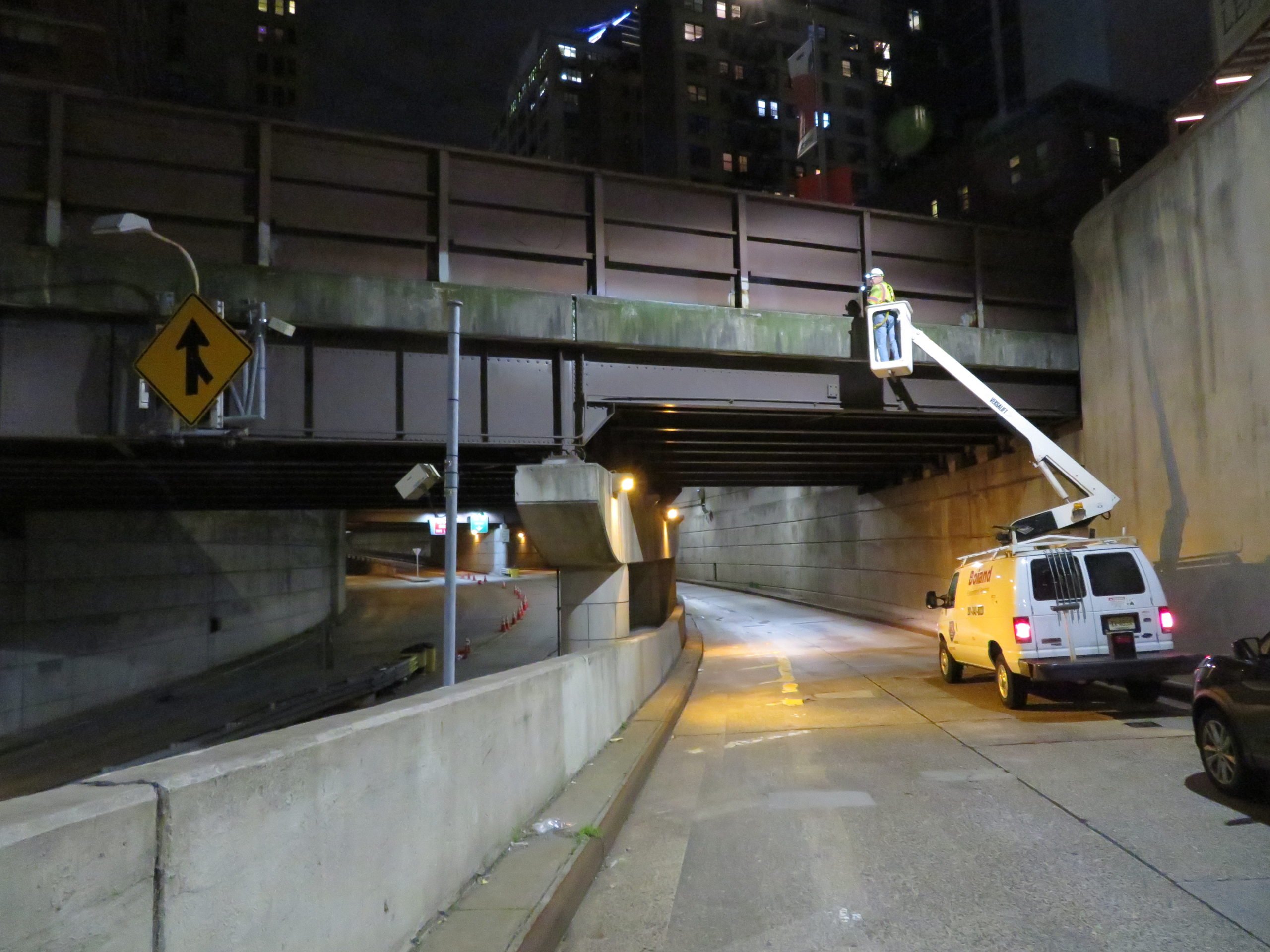
As a subconsultant, SI Engineering, P.C. (SIE) was responsible for performing the biennial inspection of the bridges and retaining walls at the New York and New Jersey approaches to the Lincoln Tunnel and preparing and delivering the biennial DOT inspection reports and condition survey report to PANYNJ. The inspection was performed in compliance with the latest requirements of FHWA / NBIS and NYSDOT.
Inspection included all bridge structural and non-structural elements whose failure could pose a threat to public safety or whose condition could cause or accelerate the deterioration of structural systems. SIE was responsible for developing recommendations and correcting all deficiencies found. Inspection also included all non-redundant and fracture critical elements as well as all fatigue prone details, all drilled holes filled with plug welds in non-redundant fracture critical elements, and the up and underside of the bridge deck. Once the reports were accepted by QAD, SIE uploaded the repair recommendations and reported photographs, drawings, and text files into PANYNJ’s Structural Integrity Database (SID).
The condition survey report included listings of all recommended repairs for each structure, using PANYNJ’s definitions of condition and terminology and the original contract drawings identification system. Plans were made of the deck and framing, indicating areas of deck and structural element deterioration. The report included items such as overall rating, condition of major structural components, increase or decrease in number of priority repairs and other pertinent information.
Elements inspected included all bridge structural and non-structural elements whose failure could pose a threat to the public safety or whose condition could cause or accelerate deterioration of structural systems and all non-redundant and fracture critical elements as well as all fatigue prone details, special emphasis details, and all structural elements whose condition is suspect. Additionally, all drilled holes filled with plug welds in non-redundant fracture critical elements were identified and documented and received 100% hands-on inspection. The top and underside of the bridge deck and the underside of the concrete deck were sounded with a hammer, and all areas of hollow-sounding concrete which were observed to be loose, bulging, delaminated or cracked were removed on an immediate basis with a chipping hammer or a light pneumatically powered gun. If the concrete could not be removed in this manner, the concrete remained in place and was located on the deficiency location plan as “hollow sounding.”
